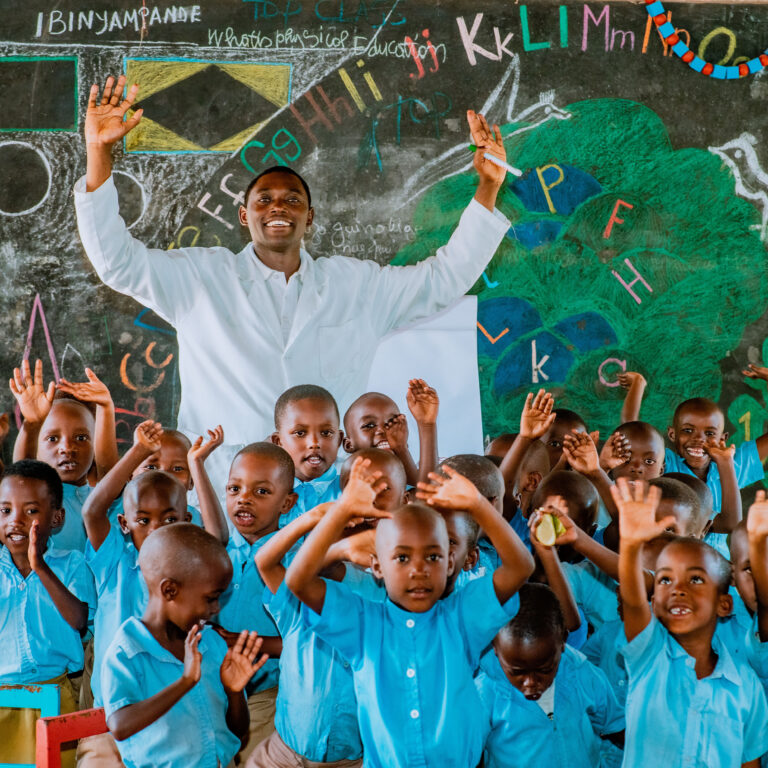Malnutrition is a silent killer
Malnutrition is the leading cause of child deaths worldwide. Each year, it claims more lives than violence, natural disasters and diseases. In a world of abundance, children shouldn’t be going hungry. By working together, we can shift the tide of malnutrition and help communities reach their full potential.
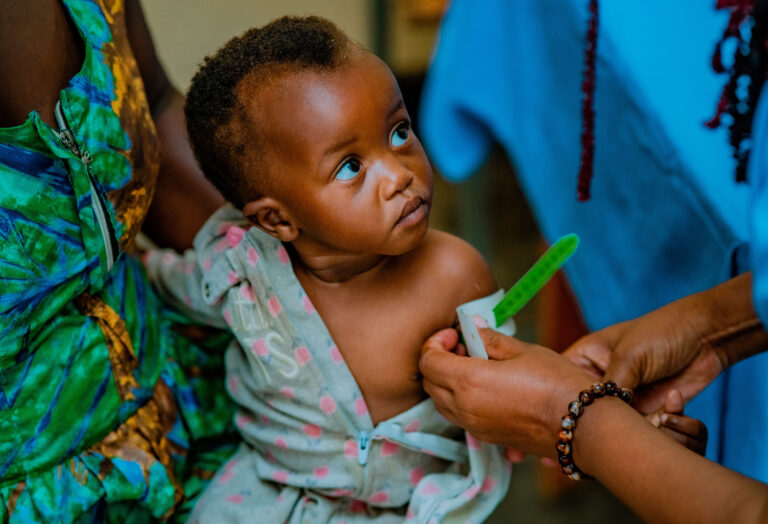


Malnutrition cripples children’s potential and hampers economic prosperity
Malnutrition is a global emergency – we are now seeing decades of progress in tackling malnutrition being reversed due to the impact of climate change, conflict and the aftermath of Covid-19. The global cost of living crisis has led to nearly half of the world’s population not being able to afford a healthy diet.
This is devastating for children – with the effects of malnutrition in childhood lasting a lifetime. It also has knock-on effects on communities and wider society – being a burden that hinders economic growth. Millions of children who could be thriving in school, getting a good education and going on to contribute to society are being held back by a lack of proper nutrition.
$264 billion
More than a quarter of a trillion dollars each year is lost for the private sector in low and middle income countries, due to stunting.
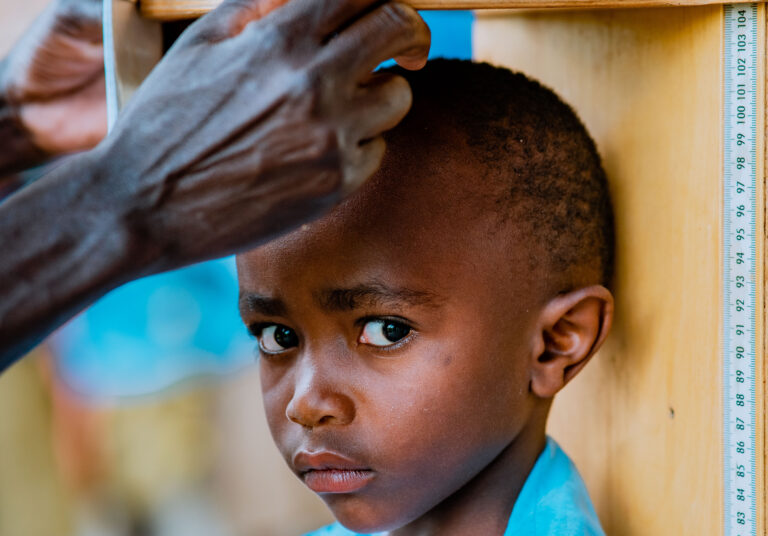
33%
Children who receive adequate nutrition are 33% more likely to escape poverty as adults.
69%
More than two thirds of women globally suffer from micronutrient deficiencies, causing serious long-term health impacts.
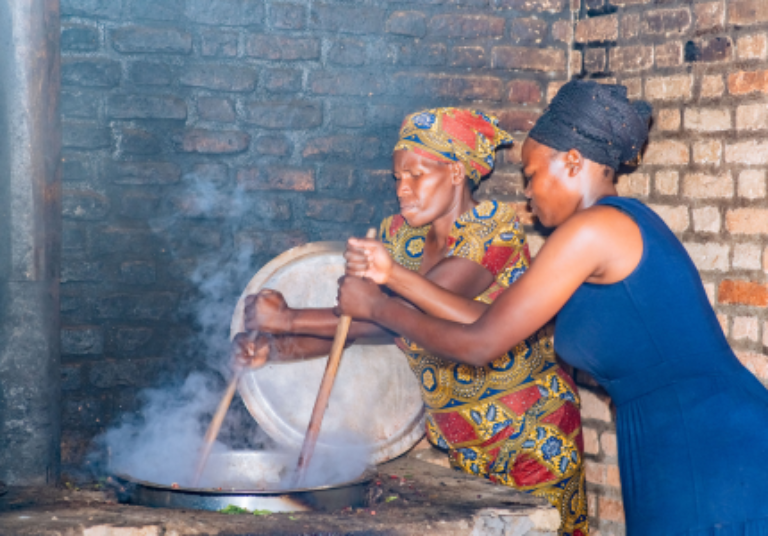
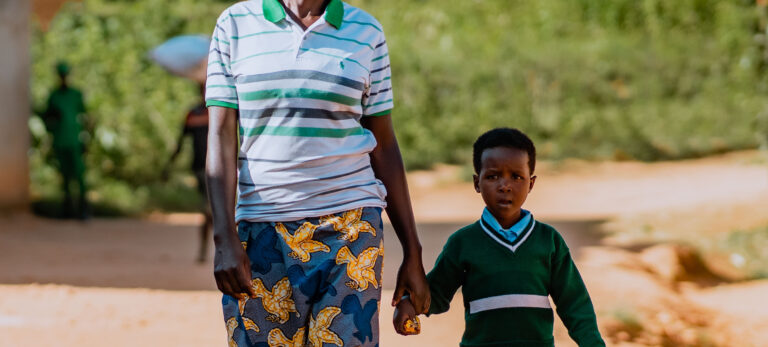
Clotilde Mother of four, Nyamagabe district, Rwanda."What I want for myself and my family, is for my children to have a good education, for them to do well in school and have a good future."

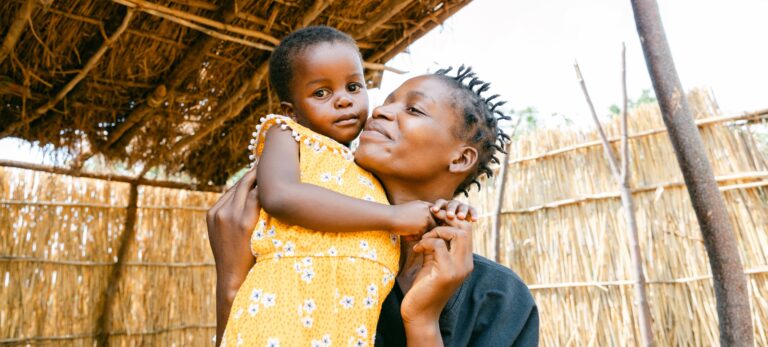
Mary 22 years old, mother of Flocy aged three years old, Balaka district, Malawi."I’d sleep without eating with the little baby. I was breastfeeding, the baby needs food through me, I need to eat."

An investment in nutrition is an investment in the foundations of development
Investing in good nutrition is proven to be one of the most effective ways of transforming societies and breaking the intergenerational trap of poverty.
For children, access to nutritious foods at key stages of life supports both their mental and physical growth. It supports their engagement at school and in turn their earning potential later in life. Growing up healthy and strong enables them to have a quality childhood – to play, learn and thrive. And every child deserves that right.
Women and girls face a ‘gender nutrition gap’ - the combination of differing biological needs, access to food and services and harmful social norms have led to this. Empowering women and girls through better access to nutrition not only directly tackles this gap, it also helps prevent the intergenerational trap of malnutrition as evidence shows that malnourished mothers are more likely to give birth to malnourished babies.
The tools are readily available to tackle malnutrition – and the evidence exists to show they work. Whilst tackling malnutrition requires a multisectoral approach, and can be complex, it remains one of the most cost-effective drivers of development, with every $1 spent on nutrition generating $16 in returns.
Despite the staggering evidence, global nutrition is dangerously underfunded. Government budgets continue to be squeezed, exacerbated by the global economic downturn and donors' budgets being stretched between a multitude of crises, including humanitarian responses to global conflict and the increasing threat of climate change. Yet we know that investments into nutrition and effective food and health systems can make catalytic change for the most under-represented communities.
Now, more than ever, partnerships are critical to leverage scarce resources and to scale-up proven interventions. Through efficient and evidence-based programming, we can ensure we create the most impact to tackle malnutrition with the wider goal of prosperity worldwide.
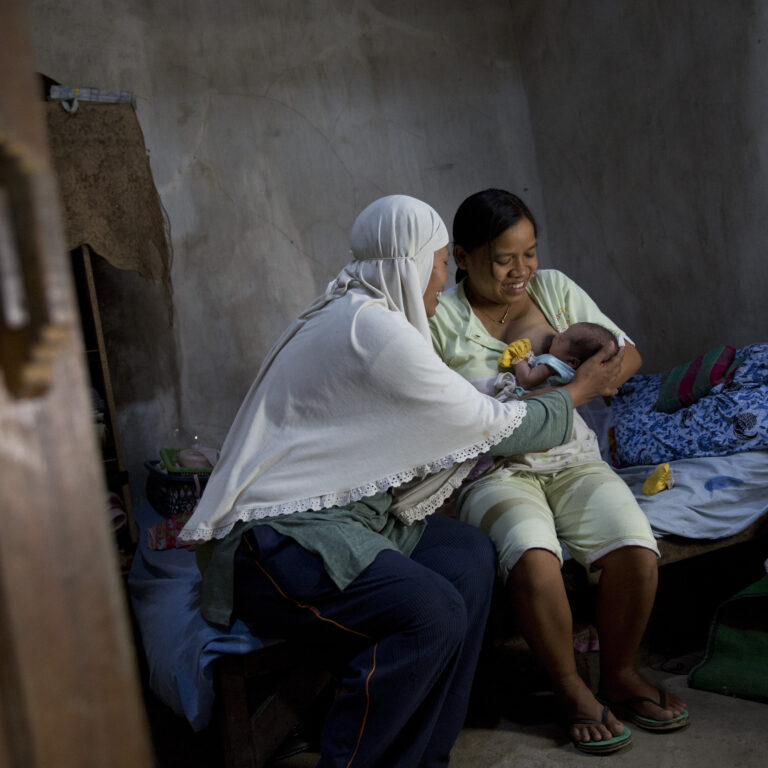
Nutrition and the Sustainable Development Goals
Good nutrition is a cornerstone for development – if we are going to achieve the UN’s Sustainable Development Goals (SDGs) – a set of globally agreed goals to ensure peace and prosperity for people and the planet by 2030, we must ensure every child has the right nutrition to reach their full potential. SDG 2 (Zero Hunger) and SDG 17 (Partnerships for the Goals) are at the heart of our programmes.
SDG 2: Zero Hunger
Good nutrition and zero hunger go hand in hand. Almost half of the global community does not have access to a healthy nutritious diet. This affects those in vulnerable situations the most. The result – millions of children are severely malnourished and hundreds of thousands of children are dying every year.
SDG 17: Partnerships for the Goals
We strongly believe that the only way to give every child access to nutritious food, as well as achieving the wider SDGs, is through collective action in partnership. Partnership is at the centre of our model and always will be. Work with us to give every child the chance not just to survive but to thrive.
WHY NUTRITION
Nutrition complements and supports broader SDGs
Nutrition goes beyond zero hunger and has a part to play in almost all the SDGs. Investing in nutrition supports the vital holistic approach that is needed to achieve the goals by 2030.
SDG: 1 No Poverty
A child that receives adequate nutrition during the early years of their life is 33% more likely to escape poverty as an adult. Good nutrition gives children the tools of empowerment to help break the intergenerational poverty cycle.
SDG 3: Good Health and Wellbeing
Malnutrition is a leading cause of child deaths under five globally. Being well-nourished at critical stages of life reduces the likelihood of developing life-threatening illnesses and diseases and allows children to grow up healthy and strong, to reach their full potential.
SDG 4: Quality Education
Malnutrition has devastating effects on a child’s physical and cognitive development. On the flip side, good nutrition in the early years better prepares children for school. Combining the two therefore addresses multiple dimensions of child development to create lasting positive effects.
SDG 5: Gender Equality
Malnutrition affects more women and girls than it does men and boys. Some of this is due to biological function, for example iron deficiency becomes more likely during menstruation and pregnancy. However, it is also largely due to discriminatory social and cultural norms. Empowering women through access to better nutrition and social protection helps tackle this inequality.
SDG 6: Clean Water and Sanitation
Poor sanitation, limited access to clean water and inadequate nutrition exist in a vicious cycle. A child without access to clean water or means to wash their hands with soap is more susceptible to repeated bouts of diarrhoea. This in turn results in the body being unable to properly absorb vital nutrients. After malnutrition, diarrhoea is one of the leading causes of child deaths under five globally.
SDG 13: Climate Action
Climate change is no longer inevitable – it’s a harsh reality. We must take proactive steps to reduce its impact, whilst supporting those affected. At the same time, we must build resilience for the future.
WHY NUTRITION
Nutrition also supports these SDGs
There is plenty of evidence to show that investing in nutrition also helps support these other SDGs. If everyone had access to better nutrition, we would have more people who could contribute to sustainable cities and communities, as well as better economic opportunities and growth.
SDG 8: Decent Work and Economic Growth
Investing in nutrition is an investment in a country’s future. Children who escape malnutrition achieve higher income levels and are more likely to escape poverty as adults. Reducing malnutrition could increase a country’s overall economic productivity by 11%, as measured by GDP per capita.
SDG 10: Reduced Inequalities
Malnutrition affects the world’s poorest and most underserved communities. These communities are often stuck in an intergenerational poverty trap, perpetuated by malnutrition. Access to better nutrition for women and children helps societies break perpetual cycles of poverty and undernutrition.
SDG 11: Sustainable Cities and Communities
Working together to build reliable infrastructure that gives people sustainable access to good nutrition leads to strong resilient communities – communities that can contribute towards achieving these global goals.
Nutrition and gender
Every year malnutrition kills more women than tobacco, alcohol and air pollution. A combination of deep-set gender inequalities and biology have led to malnutrition affecting women disproportionately.
When combatting malnutrition, we must recognise the life cycle of nutrition. Good nutrition starts in the womb. If a mother doesn’t have access to a healthy diet, her baby doesn’t either. Biological functions are also a major reason why women and girls are more vulnerable to nutritional challenges; loss of iron during menstruation and childbearing can lead to micronutrient deficiencies. On top of this pregnancy and breastfeeding add additional nutritional demands.
On top of this, discriminatory social and cultural norms have led to women and girls eating last and least within many households. They have also led to women facing barriers when it comes to accessing key financial and health services.
Our programmes are designed to address the gender nutrition gap and empower women in three ways: firstly, by providing social protection through cash transfers. This gives women the agency to address their family’s nutritional and wellbeing needs, as well as providing a means to make money themselves. Secondly, we focus on the biology – we identify gaps in the care of women (and adolescent girls) in health care systems, then deliver interventions to close those gaps. Lastly, we directly address discriminatory norms and gender inequality. We have seen the early childhood development centres we support give mothers, who are often primary carers, the chance to get back to work and make a living for their family, which in turn enables them to afford a diverse diet. Our parenting workshops across programmes also actively engage both mothers and fathers in the best nutrition and care practices for their children, creating open communications between parents and lessening the burden on the mother’s role.
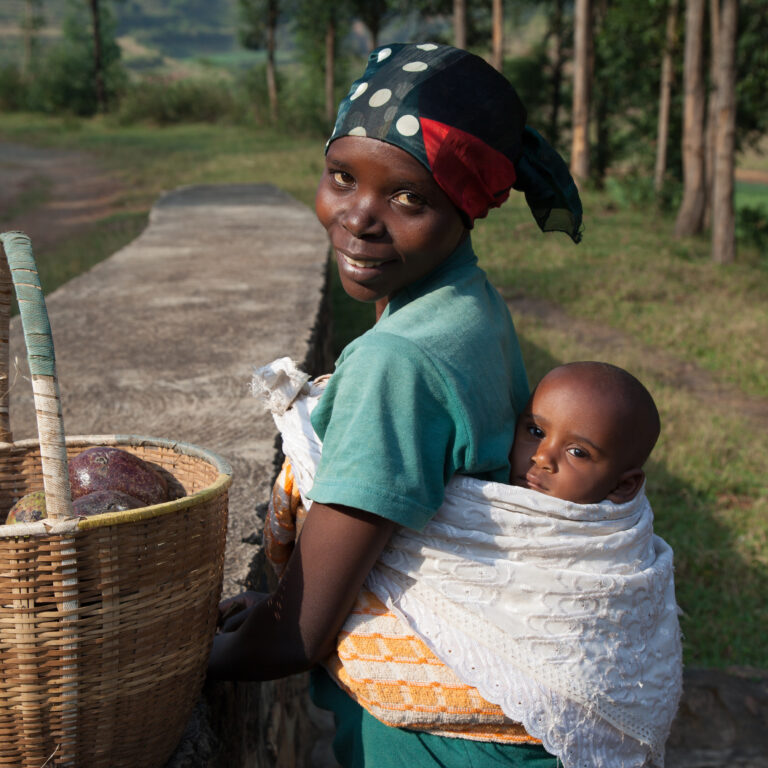
Nutrition and climate
Climate change is a long-term threat to food security and nutrition. By 2050, the risk of hunger and malnutrition could rise by 20% if the global community fails to act now to mitigate and prevent the adverse effects of climate change. Changing weather patterns caused by global warming is resulting in heatwaves, heavy rainfall and droughts. This leads to failed harvests, food shortages and rising food prices. The poorest communities who contribute the least to greenhouse gas emissions are often the most affected.
Global food systems are also driving climate change, contributing to up to a third of global greenhouse gases (whilst two thirds of all food produced globally goes to waste). You therefore cannot address climate change without looking at nutrition, and you can’t improve global nutrition without tackling climate change.
Our programmes include a range of interventions that look to mitigate the impact of climate change, such as supporting those impacted by climate change with increased nutrition and food security, whilst also proactively tackling climate change. We do this by providing climate resilient seeds, promoting nutrient-rich local foods such as fruit, vegetables, legumes, fish, and supporting small-holder farmers and cooperatives with cash payments.
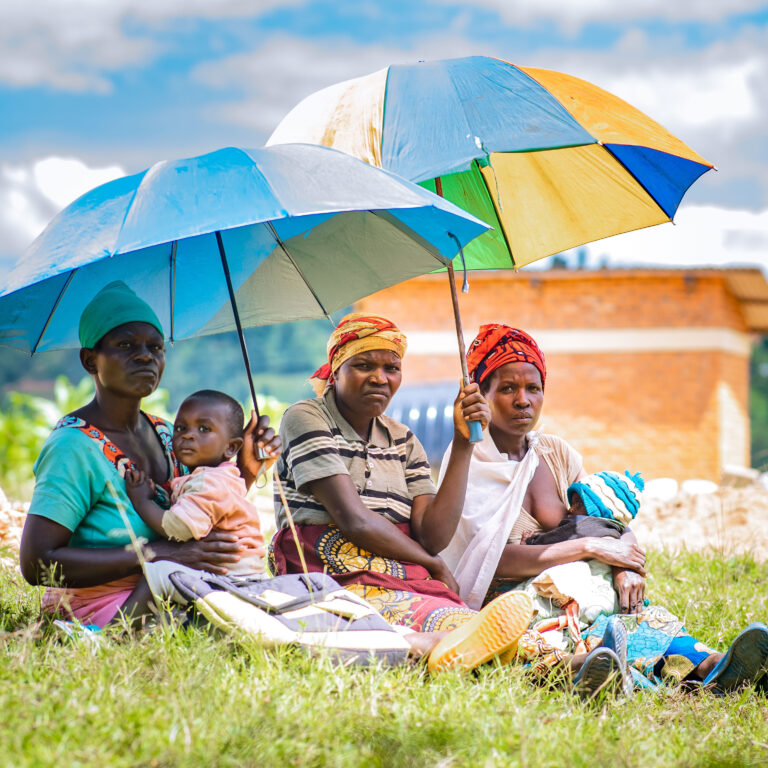
Nutrition and early childhood development
Investing in a child’s nutrition during their early years is crucial for cognitive and physical development. The development of a child begins during pregnancy and after just two to three weeks after birth, 35% of a child’s brain is already developed. Access to the right nutrition is therefore vital for giving children the right tools to be able to properly engage in education, keep up with their peers and remain curious.
In the worst case, children who do not receive enough nutritious food in early years risk stunting – they become too short for their age as a result. These children can suffer severe irreversible physical and cognitive damage, including lower IQ scores and lower earning potential as an adult.
Nutrition and early childhood development should go hand in hand. It’s not enough to look at the nutritional intake, but we should also be considering cognitive development – opportunities for play, stimulation and learning in the early years.
Where appropriate, our programmes look to integrate nutrition and early childhood development. For example, in Rwanda we are supporting the development of new community and village based early childhood development centres which not only support children with care and education, they also provide nutritious meals and promote healthy eating habits with caregivers. By integrating the two, we are best preparing children to go on and learn at school and become productive citizens in society, contributing to a country’s overall development.
